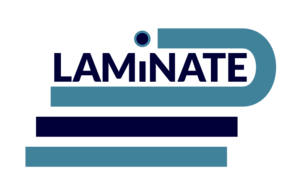LAMiNATE Members

Anders Agebjörn, senior lecturer of Swedish as a second langauge at Malmö University. Agebjörn researches language testing and assessment as well as language development and learning strategies.

Malin Ågren, associate professor of French linguistics at Lund University. Ågren studies the second language acquisition of French morpho-syntax and the teaching and learning of second/foreign languages in the Swedish school context.

Panos Athanasopoulos, professor of English Studies at Lund University. Athanasopoulos works in the areas of experimental cognitive linguistics, psycholinguistics, linguistic relativity, bilingual cognition, language acquisition.
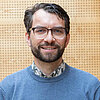
Gilbert Ambrazaitis, associate professor of phonetics and senior lecturer in Swedish as a second language at Linnaeus University. Ambrazaitis' research focuses on prosody, its multimodal nature and acquisition, as well as embodied pronunciation training.

Annika Andersson, associate professor in Swedish as a second language at Linnaeus University. Andersson’s research focuses on second language learning, more specifically on how the brain processes a first language and a second language.

Ketty Andersson, works at the institution of Logopedics, Phoniatrics and Audiology, Lund University. Andersson’s research focuses on explicit and implicit instruction of narrative skills for preschool-aged children.

Henriette Arndt, researcher in General Linguistics at Lund University and the LU Humanities Lab. She is a researcher and coordinator for LAMiNATE and the research programme TEAM (Transdisciplinary Approaches to Learning, Acquisition, Multilingualism). Her research focuses on how people use, and consequently learn, languages beyond the classroom, in their everyday lives, on– and offline. Her work also has strong methodological components, centering on the Experience Sampling Method and other intensive longitudinal methods for investigating language acquisition and use in situ.
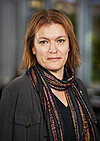
Anna Flyman Mattsson, associate professor of Swedish as a second language at Lund University. Flyman Mattsson’s research deals with language acquisition in different ages, with a particular focus on grammatical development.

Sabine Gosselke Berthelsen, postdoctoral researcher in General Linguistics at Lund University. Gosselke Berthelsen works on speech perception in first and second language users and is particularly interested in the processing of prosody.

Jonas Granfeldt, professor of French linguistics at Lund University, leader of leader of LAMiNATE, and co-chair of the research programme TEAM (Transdisciplinary Approaches to
Learning, Acquisition, Multilingualism). Granfeldt has a wide interest in different modes of language acquisition, including comparative work on early bilingualism, child and adult L2 acquisition with a focus on morphosyntax and lexicon, but he also works in educational linguistics focusing on modern languages and foreign language policy.

Maria Graziano, associate professor of linguistics and pedagogical developer at Lund University Humanities Lab. Graziano’s research targets first language acquisition and multimodal communication (speech and gesture relationship) from a developmental and a cross-linguistic perspective. Between 2021 and 2023, Graziano served as coordinator of the research platform LAMiNATE.

Marianne Gullberg, professor of psycholinguistics at Lund University, director of the Lund University Humanities Lab, leader of LAMiNATE, and chair of the research programme TEAM (Transdisciplinary Approaches to
Learning, Acquisition, Multilingualism). Gullberg studies acquisition and real time language use in adult L2 and multilingual speakers, targeting semantics, discourse, and gesture production and comprehension.

Henrik Gyllstad, associate professor of English linguistics at Lund University. Gyllstad's main research interests focus on the lexical level of language. Specifically, his research topics are the multilingual mental lexicon, phraseology and formulaic language, vocabulary learning, testing and assessment, and lexical processing.
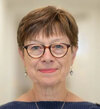
Kristina Hansson, associate professor of Logopedics, Phoniatrics and Audiology at Lund University. Hansson's main research areas are grammatical and lexical-semantic development and vulnerability in children with developmental language disorders, in multilingual children, and in children with different degrees of hearing impairment.

Alastair Henry, professor of language education at Lund University. Henry's research involves the psychology of language learning, particularly motivation, language learners’ communication behaviors, language teachers’ motivational practices and teacher identity development.

Mikael Johansson, professor of Psychology at Lund University. Johansson’s research concerns the cognitive neuroscience of learning, memory, and cognitive control.
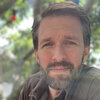
Roger Johansson, associate professor of Psychology at Lund University. Johansson's research revolves around the neurocognitive interplay between eye movements, visual attention, memory systems, internal simulation, cognition, communication and learning.
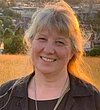
Victoria Johansson, professor in the Teaching and learning of Swedish at Kristianstad University. Johansson’s research interest includes language development through the lifespan with a particular focus on language production and cognitive aspects of writing.
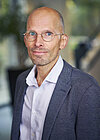
Tomas Jungert, associate professor of psychology at Lund University. Jungert’s research interests are found in psychology and include work psychology, educational psychology, and social psychology and concern, for example, studies on motivation and school bullying.

Joyce Kling, senior lecturer of English studies at Lund University. Kling’s general research interests are in the integration of content and language, i.e. English-medium instruction, Content and Language Integrated Learning (CLIL) and the international classroom, as well as language assessment and language teacher leadership and administration.

Johanna Karlsson, senior lecturer in Swedish as a second language and postdoctoral researcher in sports language at Lund University. Karlsson's research deals with sports language, with a particular focus on second language speakers' subject-specific literacy in the health component of the compulsory school subject Physical education and health at the secondary level.
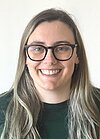
Osa Marie Krstic, PhD student in psychology at Lund University. Her research examines psycho-social experiences involved in second/foreign language learning and use across different proficiency levels and contexts, with particular attention to emotional experiences and learner wellbeing.

Tanja Kupisch, professor of Linguistics at Lund University. She works on bilingual child and adult language acquisition, trilingualism in childhood and adulthood, heritage language acquisition and bilectal acquisition as well as the links between bilingualism and language policies and between bilingualism and diachronic change.

Simone Löhndorf, senior lecturer of linguistics at Kristianstad University. Löhndorf’s main research interests are language development, semantics and semantic relations.
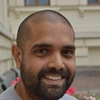
Johan Mårtensson, associate professor in cognitive neuroscience at Lund University. Mårtensson’s work focuses brain change during language learning, with ongoing studies into the effects of virtual reality based language learning in children and adults.
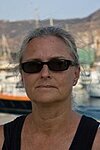
Carita Paradis, professor of English Language and Linguistics at Lund University. Paradis’s research concerns the dynamics of meaning-making in human communication and is situated within the framework of Cognitive Linguistics.
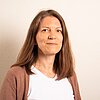
Céline Rocher Hahlin, senior lecturer of French at Dalarna University. Rocher Hahlin researches foreign language teaching and learning, with a particular focus on motivation.

Mikael Roll, professor of Phonetics. Roll conducts research in neurolinguistics on how the brain processes spoken language.

Susan Sayehli, senior lecturer of Swedish as a second language. Sayehli researches second language acquisition with a particular focus on cross-linguistic influence and motivation.
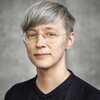
Frida Splendido, senior lecturer of Swedish as a second language and deputy director of Lund University Humanities Lab. Splendido's main research interests are language teaching and language acquisition in beginner second-language learners, with a particular interest in phonetic-phonological development.
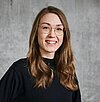
Helene Springer, doctoral student in linguistics. Springer’s PhD project focuses on second language acquisition and multimodality, examining how visual information influences the perception of second language vowels.
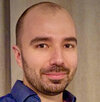
Lari-Valtteri Suhonen, senior lecturer at the Department of Educational Work, University of Borås. Suhonen's research mainly relates to third language acquisition and cross-linguistic influence.

Joost van de Weijer is associate professor of linguistics and works as a methodologist in the Lund University Humanities Lab. As part of this employment, he assists students and researchers in planning and implementing experiments and analyzing the results, and teaches introductory and a follow-up courses in the statistical analysis of experimental data.

